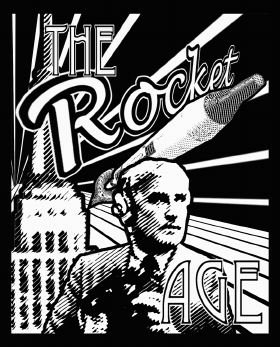

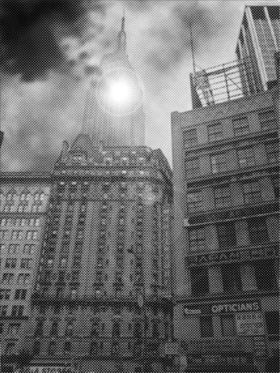
On August 3, 1944, the skies of New York were torn by the double
thunderclap of the first man-made sonic boom over U.S. territory. A new German rocket, quickly dubbed the V3, had
pierced the heart of Manhattan and detonated a 1.5 ton warhead in the heart of the city. As the nominal civil defense forces of Greater New York rushed to respond to
this 'impossible' contingiency, the citizens were transfixed by the sight of the rocket's
secondary impact —the Empire State Building ablaze with incandescent flame.
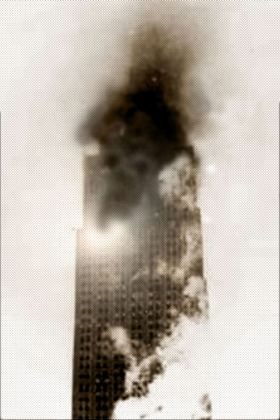
It is a measure of the shock caused by the V3 impact that only
two photographers managed to record the first seconds of the rocket fuselage
impact. The Empire State Building lit up lower Manhattan with a harsh blue light as the
remaining thruster fuel blazed from the impact on the building's 87 floor. The first photograph was
taken by a Daily News restaurant critic and the second photograph by a midwestern tourist using amatuer equipment.
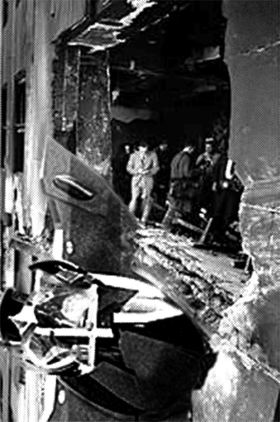
Newsmen and Photographers are allowed a closeup view of the V3 wreckage.
Government censorship agencies were desperate to control public reaction and prevent panic.
Previous intercontinental attacks by the Japanese FuGo bombs had produced limited effects in remote
regions of the country. With the V3 attack, it was clear that the news agencies had to be given access to prevent public hysteria .
Fortunately for the combined purposes of the media arbiters, the spectacular wreckage of the fuselage
allowed the news agencies to focus
on the V3 and its awsome technological threat, while redirecting public notice from the terrific devastation
caused by the payload vehicle.
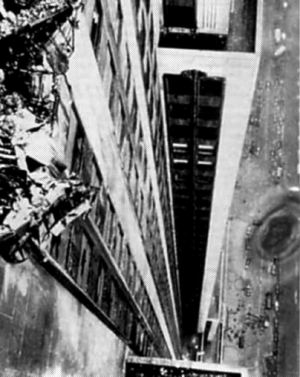
The combustion chamber of the V3 rocket was shot like a
cannonball by the tank explosion that followed impact. The bell-like chamber plummetted to the street
below, where the heat and remaining propellant ignited the asphalt, and subsequently a subterranian gasline.
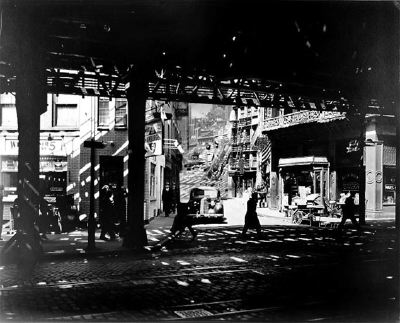
The only newspaper to print any direct view of the impact site on the Hoboken Shore,
was the Madison Recorder, of Madison, WI.
Taken from under the El, beyond the civil defense barricades, it just shows the rubble at the periphery
of the impact zone.
The photographer had to dodge civil
defense and national
security personnel to take this shot. Only government photographers were allowed into the blast zone.
Their records have yet to be released under the
Freedom of Information act on the grounds of pain and suffering clause, because there are still
hundreds of survivors
and relatives of survivors still living. The rest of the media used low angle, wide field, arial views of the impact site. Follow up
stories focused on small scale destruction and especially on reconstruction.
New Stuff